Today’s Current Affairs: 31st aug 2023 for UPSC IAS exams, State PSC exams, SSC CGL, State SSC, RRB, Railways, Banking Exam & IBPS, etc
Table of Contents
BRIGHT STAR-23:

As per recent reports, thirty-four countries including India will participate in the joint military exercise, BRIGHT STAR-23.
- BRIGHT STAR-23:- 31 August to 14 October 2023.
- Venue: Mohammed Naguib Military Base,
- Indian Army contingent comprising 137 personnel will participate in a military exercise.
- It is a multinational tri-services joint military exercise.
- It will be led by US CENTCOM and the Egyptian Army.
- This year 34 countries will participate in the Exercise.
- It will be the largest-ever joint military exercise in West Asia and North Africa region.
- This is the first time that the Indian Armed Force with 549 personnel participated in the exercise.
- During the exercise participating countries will share the best practices to combat emerging unconventional threats and enhance regional partnerships.
- The exercise will provide a unique opportunity for the Indian Army to share best practices and experiences with other armies aimed at enhancing defense cooperation.
10th Plenary Of IPBES:

The 10th plenary of the Intergovernmental Science-Policy Platform on Biodiversity and Ecosystem Services (IPBES) was held recently.
- 10th plenary of IPBES was on 28 August – 2 September 2023.
- Location: Bonn, Germany.
- Agenda: the scientific assessment report on “Invasive Alien Species and their Control”.( Invasive Species)
- The focus of IPBES 10 will be the thematic assessment of invasive alien species and their control, whose preparation was approved at IPBES 8.
- IPBES10 is the first meeting of this global body since the adoption of the Kunming-Montreal Global Biodiversity Framework (GBF).
Intergovernmental Science-Policy Platform on Biodiversity and Ecosystem Services (IPBES):
- Established: 2012.
- HQ: Bonn, Germany.
- IPBES Member States: 143.
- It is an independent intergovernmental body.
- It provides evidence-based and policy-relevant information on biodiversity and ecosystem services. ( Biodiversity conservation)
- Observer states and stakeholders also participate in Plenary sessions.
- IPBES assesses the state of biodiversity and the ecosystem services it provides to society, in response to requests from decision-makers.
- It is not a United Nations body.
- The United Nations Environment Programme (UNEP) provides secretariat services to IPBES.
Existence Of Sulphur On The Moon’s Surface:
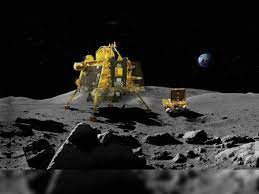
India’s Chandrayaan-3 mission’s Pragyan rover has confirmed the existence of sulphur on the moon’s surface near the south pole.
- This discovery was enabled by the Laser-Induced Breakdown Spectroscopy (LIBS) instrument onboard the rover, marking the first in-situ measurements of the lunar surface’s elemental composition in this region.
- The LIBS technique involves using intense laser pulses to analyse materials, creating hot and localized plasma whose emitted light is then studied to determine the material’s elemental composition.
- The analysis has also revealed the presence of elements like aluminium, calcium, iron, chromium, titanium, manganese, silicon, and oxygen on the lunar surface. T
- The Pragyan rover is still actively searching for the presence of hydrogen.
GREAT Scheme:

The Union Ministry of Textiles released the guidelines of the GREAT scheme.
- Grant for Research and Entrepreneurship across Aspiring Innovators in Technical Textiles (GREAT) Scheme focuses on supporting individuals and companies to translate prototypes to technologies & products, including commercialisation.
- Aim is to provide much-needed impetus for the development of the technical textiles startup ecosystem in India, especially in niche sub-segments such as bio-degradable and sustainable textiles, high-performance and speciality fibres, and smart textiles.
- Under this scheme, a grant-in-aid of up to Rs 50 lakh for up to a period of 18 months will be provided.
- The textile ministry will additionally provide 10 per cent of the total grant-in-aid to incubators.
- Only a minimum of 10 per cent contribution has to be made by the incubatee.
- All of this is being done by incubators like IITs, NITs, Textiles Research Associations, and Centres of Excellence.
- The textiles ministry has also given a nod to 26 institutes for upgrading their laboratory infrastructure and training of trainers in the application areas of technical textiles.
Walking Leaves : Unknown Species Of Leaf Insects
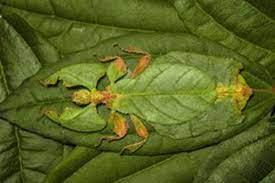
An international research team recently described seven previously unknown species of leaf insects, also known as walking leaves.
- Walking Leaves also called leaf insects, are insects that look very similar to leaves.
- They are any of more than 50 species of flat, usually green insects (order Phasmida or Phasmatodea) that are known for their striking leaflike appearance.
- They feed on plants and typically inhabit densely vegetated areas.
- Their natural range extends from islands in the Indian Ocean, across parts of mainland South Asia and Southeast Asia, to Papua New Guinea and Australia in the western Pacific.
- They measure roughly 28 to 100 mm (1.1 to 3.9 inches) in body length.
- They are mostly brown or green, some slightly speckled or have serrated edges like nibbled leaves.
- They sway and rock back and forth, imitating the motion of leaves in the breeze.
- Female walking leaves cannot fly. Males can fly short distances thanks to their well-developed hind wings.
- The arms and legs of walking leaves can regenerate.
- These insects reproduce sexually, with females laying eggs.
- The eggs often resemble seeds or plant structures, adding to their camouflage.
Takahe Bird : Large Flightless Bird
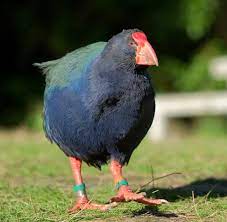
A large flightless bird named ‘Takahe’, believed to be extinct decades ago, has returned to the forests of New Zealand’s South Island.
- Takahe Bird is hailed as one of the world’s rarest creatures native to New Zealand.
- They have been an intrinsic part of New Zealand’s ecosystem since the prehistoric Pleistocene era, as evidenced by fossil remains.
- Their population nosedived during the late 1800s when European settlers came along with their animal companions— stoats, cats, ferrets and rats.
- The birds had been formally declared extinct in 1898. It was rediscovered in 1948 in several remote valleys on New Zealand’s South Island, and their numbers have been steadily growing since then.
- They are large, stout birds with vibrant plumage.
- They have predominantly blue feathers on their bodies, green wings, and a large red beak.
- Their legs are pink, and they have a white undertail.
- They grow up to the size of a large hen and can weigh as much as 3kg.
- They breed only once a year, raising one to two chicks.
- They live up to 18 years in the wild and 22 years in sanctuaries.
- They live on a high-fibre diet of starchy leaves and seeds.
Tethered Drone : Procurement
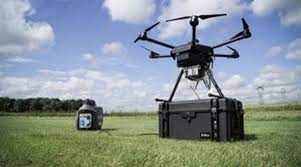
The Indian Army recently signed contracts for the procurement of 130 tethered drones and 19 tank-driving simulators under Emergency Procurement (EP).
- Tethered Drone is an unmanned aerial vehicle tethered to the ground.
- It consists of a base station on the ground and the drone, which is connected to the station through the tether (cable).
- This tether provides power and data communication to the drone, allowing it to operate for extended periods without the limitations of a finite onboard battery.
- The drone can be operated remotely to perform specific tasks.
- Tethered UAVs are perfect for data capture and telemetry due to the reliability of tethered connections.
- They dramatically reduce technical and human error crashes in flight.
- They provide a secure line of communication between the ground station and the aircraft.
- The physical connection to the ground makes tethered drones less vulnerable to interference or hacking compared to wireless drones.
- It also does not require GPS navigation.
- Many tethered drones have longer flight times compared to free-flying, battery-operated drones.
- Due to the restricted movement of a tethered drone, the operator does not need piloting skills and can mainly focus on their tasks.
ILLUMA-T:
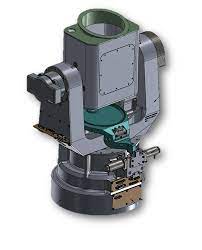
The American space agency NASA is launching a groundbreaking technology demonstration known as the Integrated LCRD Low Earth Orbit User Modem and Amplifier Terminal (ILLUMA-T) to the Space Station
- ILLUMA-T is approximately the size of a standard refrigerator.
- It will be secured to an external module on the International Space Station to conduct its demonstration with Laser Communications Relay Demonstration LCRD.
- The ILLUMA-T, along with the LCRD was launched in December 2021 will complete NASA’s first two-way, end-to-end laser relay system.
- Once ILLUMA-T is on the space station, the terminal will send high-resolution data, including pictures and videos, to LCRD at a rate of 1.2 gigabits per second.
- It is scheduled to launch on SpaceX’s 29th Commercial Resupply Services mission for NASA.
- After its launch, ILLUMA-T will be installed on the station’s Japanese Experiment Module-Exposed Facility (JEM-EF).
- Benefits:
- Laser communications enable missions to transmit more data in a single transmission.
- More science and exploration data from space allow NASA to make more discoveries about our planet, microgravity, and the human spaceflight experience.
Electrified Flex Fuel Vehicle:

The Minister of Road Transport and Highways of India unveiled the Prototype of BS-6 Stage-II, Electrified Flex fuel vehicle.
- Electrified Flex fuel vehicle is the World’s first BS-6 Stage-II Electrified Flex fuel vehicle.
- An Electrified Flex Fuel Vehicle has both a Flexi Fuel engine and an electric powertrain.
- Flexible fuel vehicles (FFVs) have an internal combustion engine and are capable of operating on gasoline and any blend of gasoline and ethanol up to 83%.
- In flex fuels, the ratio of ethanol to petrol can be adjusted, but the most commonly used flex fuel uses 85 per cent ethanol and 15 per cent petrol.
- Bio-ethanol contains less energy per litre than petrol, but the calorific value (energy contained in the fuel) of bio-ethanol will become on par with petrol with the use of advanced technology.
- Since an FFV is capable of running on either petrol or ethanol, it will be the first of its kind 100 per cent dual fuel vehicle to be running on Indian roads.
- Flex fuel engines are already popular in Brazil, the United States, the European Union and China, among many others.
ChaSTE Probe:
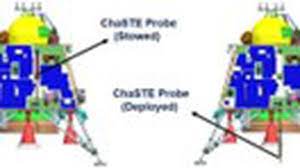
The Indian Space Research Organisation (ISRO) released a graph of the temperature variation between the moon’s surface and a point around 8 cm below as measured by an instrument named ChaSTE probe.
- The Chandra’s Surface Thermophysical Experiment (ChaSTE) is a temperature probe.
- It can be driven into the moon’s surface using a motor to a depth of up to 10 cm. It has 10 sensors.
- It measured the temperature profile of the lunar topsoil around the South Pole to understand its thermal behaviour.
- It was developed by the Space Physics Laboratory of ISRO’s Vikram Sarabhai Space Centre (VSSC), together with the Physical Research Laboratory (PRL), Ahmedabad.
- Its findings reflect this variation between the moon’s surface, which is covered by a patina of loose rocks and dust called the lunar regolith and 10 cm under it.
- Its data show that at the moon’s surface (where the lander is located, a point between the craters Manzinus C and Simpelius N), the temperature is 40-50 degrees But just under 80 mm under, it plunges to around -10 degrees C.
- The temperature variation indicates that the moon’s topsoil is a powerful thermal insulator, in keeping with previous findings.
- It adds credence to the idea that it can be used to build habitats for humans to shield them from frigid conditions and harmful radiation.
Hollongapar Gibbon Sanctuary:

Scientists suggested rerouting the railway track running through the Hollongapar Gibbon Sanctuary.
- Hollongapar Gibbon Sanctuary was renamed on 25 May 2004, formerly known as the Gibbon Wildlife Sanctuary or Hollongapar Reserve Forest.
- It is an isolated protected area of evergreen forest located in the Jorhat district of Assam.
- The upper canopy of the forest is dominated by the Hollong tree, while the Nahar dominates the middle canopy. The lower canopy consists of evergreen shrubs and herbs.
- The sanctuary has a rich biodiversity and is home to the only apes in India, the western Hoolock, as well as the only nocturnal primate found in the northeast Indian states, the Bengal slow loris.
- Also it is home to Stump-tailed macaque, northern pig-tailed macaque, eastern Assamese macaque, rhesus macaque, and capped langur etc




